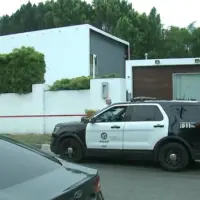
(NEW YORK) — Attorney General Pam Bondi and the Federal Bureau of Investigation in February released what was then described as the “first phase of the declassified Epstein files.”
That initial release — which was delivered to a group of prominent right-leaning influencers and journalists — included 341 pages of documents related to the disgraced financier. But 118 pages of those files were duplicative of one another.
The vast majority of those documents were previously made public through the prosecution of Jeffrey Epstein’s former associate Ghislaine Maxwell or civil lawsuits, including flight logs from Epstein’s plane, a redacted version of Epstein’s so-called “black book” of contacts and a heavily redacted seven-page list of masseuses.
The only newly-released document in “phase one,” which received little public attention, was a three-page catalog of evidence that appears to be an accounting of evidence seized during the searches of Epstein’s properties in New York and the U.S. Virgin Islands after his arrest in 2019, and a search of his Palm Beach mansion a dozen years earlier.
That little-noticed index offers a roadmap to the remaining trove of records that President Donald Trump’s administration has declined to release, including logs of who potentially visited Epstein’s private island and the records of a wiretap of Maxwell’s phone.
The three-page index is a report generated by the FBI that lists the evidence inventoried by federal law enforcement during the multiple investigations into his conduct. According to that index, the remaining materials include 40 computers and electronic devices, 26 storage drives, more than 70 CDs and six recording devices. The devices hold more than 300 gigabytes of data, according to the DOJ.
The evidence also includes approximately 60 pieces of physical evidence, including photographs, travel logs, employee lists, more than $17,000 in cash, five massage tables, blueprints of Epstein’s island and Manhattan home, four busts of female body parts, a pair of women’s cowboy boots and one stuffed dog, according to the list.
The unreleased evidence notably includes multiple documents related to two islands Epstein owned in the U.S. Virgin Islands, Little Saint James — where his compound was located — and Greater Saint James. According to the index, the files include a folder containing Island blueprints, photographs and other documents.
Some of the documents could shed light on who visited the island. According to the index, the files also include a Little Saint James logbook as well as multiple logs of boat trips to and from the island.
The evidence also includes multiple lists, one vaguely described as a “document with names” and an employee contact list. Investigators also recovered pages of handwritten notes, multiple photo albums, an Austrian passport with Epstein’s photograph and more than a dozen financial documents.
The records also include three discs containing the outcome of “court authorized intercept[s]” of a phone number previously belonging to Ghislaine Maxwell.
In a joint memo released last week, the FBI and DOJ argued that a “large portion” of the records included photographs of victims and child pornography. According to the DOJ, the evidence includes “images and videos” of victims who appear to be minors, “over ten thousand downloaded videos and images of illegal child sex abuse material and other pornography,” and a “large volume” of images of Epstein. Authorities also concluded that Epstein did not maintain a “client list” or blackmail prominent individuals.
“While we have labored to provide the public with maximum information regarding Epstein and ensured examination of any evidence in the government’s possession, it is the determination of the Department of Justice and the Federal Bureau of Investigation that no further disclosure would be appropriate or warranted,” the memo said.
The memo argued that “a fraction of this material would have been aired publicly had Epstein gone to trial” and that a court order prohibits further disclosure of the materials.
“One of our highest priorities is combatting child exploitation and bringing justice to victims. Perpetuating unfounded theories about Epstein serves neither of those ends,” the memo said.
Copyright © 2025, ABC Audio. All rights reserved.














